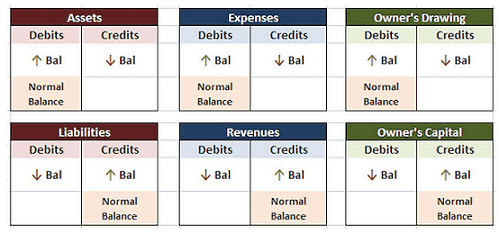
Once financial elements are recognized, IFRS provides measurement guidelines to ensure they are valued correctly. The two most common approaches are fair value measurement and historical cost measurement. IFRS assumes that businesses will continue to operate in the foreseeable future unless evidence suggests otherwise.
Services We Provide
With its broader international adoption, IFRS seems primed for expansion, potentially bridging the gap between standards. However, GAAP remains deeply rooted in the United States, making it a steadfast presence. The future might see a convergence of these standards and allow businesses to easily navigate international markets. Regardless of the outcome, the dynamic nature of accounting standards will persist, calling for adaptability, informed choices, and a keen understanding of how GAAP and IFRS impact financial reporting. IFRS is principles-based and may require lengthy disclosures in order to properly explain financial statements.
Measurement principles determine how financial items are valued
- IFRS prohibits the use of the Last-In, First-Out (LIFO) method, which can lead to significant differences in reported inventory values and cost of goods sold.
- Future developments may include further alignment of standards, increased adoption of IFRS, and continued collaboration between the IASB and FASB to address emerging accounting issues.
- Reporting differences with respect to the process and amount by which we value an item on the financial statements also applies to inventory, fixed assets and intangible assets.
- So those are the three main differences that I would like you to remember, and that’s about it when it comes to GAAP versus IFRS here.
- It aims to harmonize accounting practices worldwide, making it easier for global businesses to communicate their financial information effectively.
Harmonizing these standards aims to improve comparability and transparency in financial statements, facilitating better decision-making. Efforts to converge IFRS and GAAP have been ongoing, though significant differences remain in areas such as revenue recognition, inventory accounting, and financial instruments. Understanding the nuances of revenue recognition is vital for stakeholders to interpret financial statements correctly. Differences in timing and treatment of performance obligations can have a significant impact on how revenue is reported, potentially affecting investment decisions and Interior Design Bookkeeping overall perceptions of a company’s financial health.
Balance Sheet

Further exploration uncovers deeper insights into their impacts on financial statements. IFRS prohibits the use of LIFO (Last In, First Out) for inventory valuation because it can distort a company’s profitability and financial position. LIFO can result in lower reported earnings and inventory values during periods of rising prices, as the most recent (and typically higher) costs are matched against current revenues. This can lead to less relevant and less comparable financial statements. GAAP and IFRS are two accounting frameworks guiding financial statement preparation. GAAP, established by the FASB in the USA, is more rules-based, while IFRS, set by the IASB, is principles-based, allowing greater accountant discretion.
These standards, as set by each particular country’s accounting standards board, will in turn influence what becomes GAAP for each particular country. For example, in the United States, the Financial Accounting Standards Board (FASB) makes up the rules and regulations which become GAAP. The best way to think of GAAP is as a set of rules that companies follow when their accountants report their financial statements. These rules help investors analyze and find the information they need to make sound financial decisions. Understanding these nuances in financial statement presentation under different reporting standards is essential for accurate analysis and decision-making.
The Role of International Organizations in Global Harmonization Efforts for IFRS and GAAP
- Financial statements serve as the primary means through which companies communicate their financial performance and position to stakeholders.
- Proper valuation ensures that stakeholders have a clear picture of the organization’s financial health and performance.
- While IFRS also expenses research costs, IFRS allows the capitalization of development costs as long as certain criteria are met.
- Remember, one of the biggest differences we saw between GAAP and IFRS was the revaluation of our long-term assets, okay?
GAAP typically requires a more detailed classification, often leading to a more granular breakdown of expenses and other financial elements. IFRS allows for the revaluation of intangible assets to fair market value under certain conditions, providing a more dynamic reflection of an asset’s value. In contrast, GAAP generally requires intangible assets to be recorded at historical cost, with subsequent impairment testing but no gaap vs ifrs income statement revaluation, potentially leading to less timely adjustments in asset values.

Main Differences Between GAAP and IFRS

The income statement under GAAP can be presented in either a single-step or multi-step format. The single-step format aggregates all revenues and gains, and subtracts all expenses and losses to arrive at net income. The multi-step format, on the other hand, separates operating revenues and expenses from non-operating items, providing a retained earnings balance sheet more detailed view of a company’s core business performance. IFRS does not prescribe a specific format for the income statement, allowing companies to choose the presentation that best reflects their operations. This can result in more diverse presentations, tailored to the unique aspects of each business.

Income statement presentation: IFRS compared to US GAAP
Be diligent in applying the appropriate standard to ensure accurate and transparent financial reporting. IFRS is designed to provide a common accounting language, making it easier for companies and investors to compare financial statements across international boundaries. At Invensis, we ensure that businesses across the world adhere to the specific accounting standards applicable to their region and industry. Our finance and accounting experts help them comprehend accounting standards’ intricacies and ensure that transactions and financial reporting align with GAAP Vs IFRS principles, differences, rules, and key principles.
